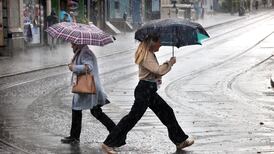The road to the nationalisation of AIB
1966
AIB is founded as the result of a union of three banks – the Munster Leinster, the Provincial Bank and the Royal Bank – following a conversation between Munster Leinster chairman Edmond (Mon) O’Driscoll and John Freeman, his counterpart at the Provincial, that took place at a urinal in Dublin’s Shelbourne Hotel.
1983
It is known within some circles that former (and future) taoiseach Charlie Haughey, then leader of the opposition, owes AIB over £1 million. During a time of relative financial penury in Ireland, Haughey enjoyed a conspicuously lavish lifestyle funded mainly through overdrawn AIB accounts. AIB wrote off a large part of the debt.
1985
AIB walks away from a disastrous investment in the Insurance Corporation of Ireland (ICI) – at that time, the biggest corporate failure in Irish history – leaving the State to pick up the bill. The incident not only threatened to bring down AIB, but jeopardised the financial stability of the country.
1980s/1990s
AIB is an accomplice to bogus non-resident account fraud, otherwise known as the Dirt scandal. No one is jailed for the crime, which amounts to bank-sponsored tax evasion.
2002
AIB suffers a loss of $691 million following a rogue trading scandal perpetrated by currency trader John Rusnak, an employee at its US subsidiary, Allfirst, based in Baltimore. Rusnak had been gambling AIB’s money unnoticed for five years.
2004
The bank is caught overcharging customers for foreign exchange transactions over an eight-year period. It later emerges several former senior executives had tax issues arising from offshore investments. Dodgy practices are also discovered at the AIB investment managers division.
2008 September 30th
With the banking crisis in full flow, the Government introduces the bank guarantee covering the liabilities of €440 billion across the Irish banks and building societies, including AIB. The guarantee is subsequently described by Minister for Finance Brian Lenihan as “the cheapest bailout in the world so far”.
2008 December 21st
The Government announces that it will inject €2 billion into both AIB and Bank of Ireland.
2009 January
Employees in AIB’s capital markets division are informed earlier than usual in the year of the size of their individual bonuses for 2008 – the year in which the Irish banking system was brought to the brink of collapse.
2009 February 12th
The recapitalisation of AIB and Bank of Ireland goes ahead, but the figures have now increased to €3.5 billion for each. The bailout is granted in return for indirect 25 per cent stakes through preference shares in the banks.
2009 April 20th
The Department of Finance says €5 billion would be “appropriate” to provide sufficient strength to AIB’s capital, rather than €3.5 billion. AIB chairman Dermot Gleeson, chief executive Eugene Sheehy and finance chief John O’Donnell resign.
2010 March 30th
As the Government starts to estimate the size of the “black holes” at the banks as part of the process of transferring loans to the National Asset Management Agency (Nama), it emerges that AIB will require €7.4 billion.
2010 September 30th
The Central Bank reveals that AIB needs to raise another €3 billion, which the State will underwrite, taking the bill to €10.4 billion. It emerges that managing director Colm Doherty and executive chairman Dan O’Connor are to step down, as the State becomes a majority shareholder.
Yesterday
The Government secures a High Court order allowing it to pump a further €3.7 billion of State cash into AIB from the National Pension Reserve Fund in a move that effectively nationalises the bank. The move involves the use of new sweeping bank rescue legislation enacted earlier this week.






